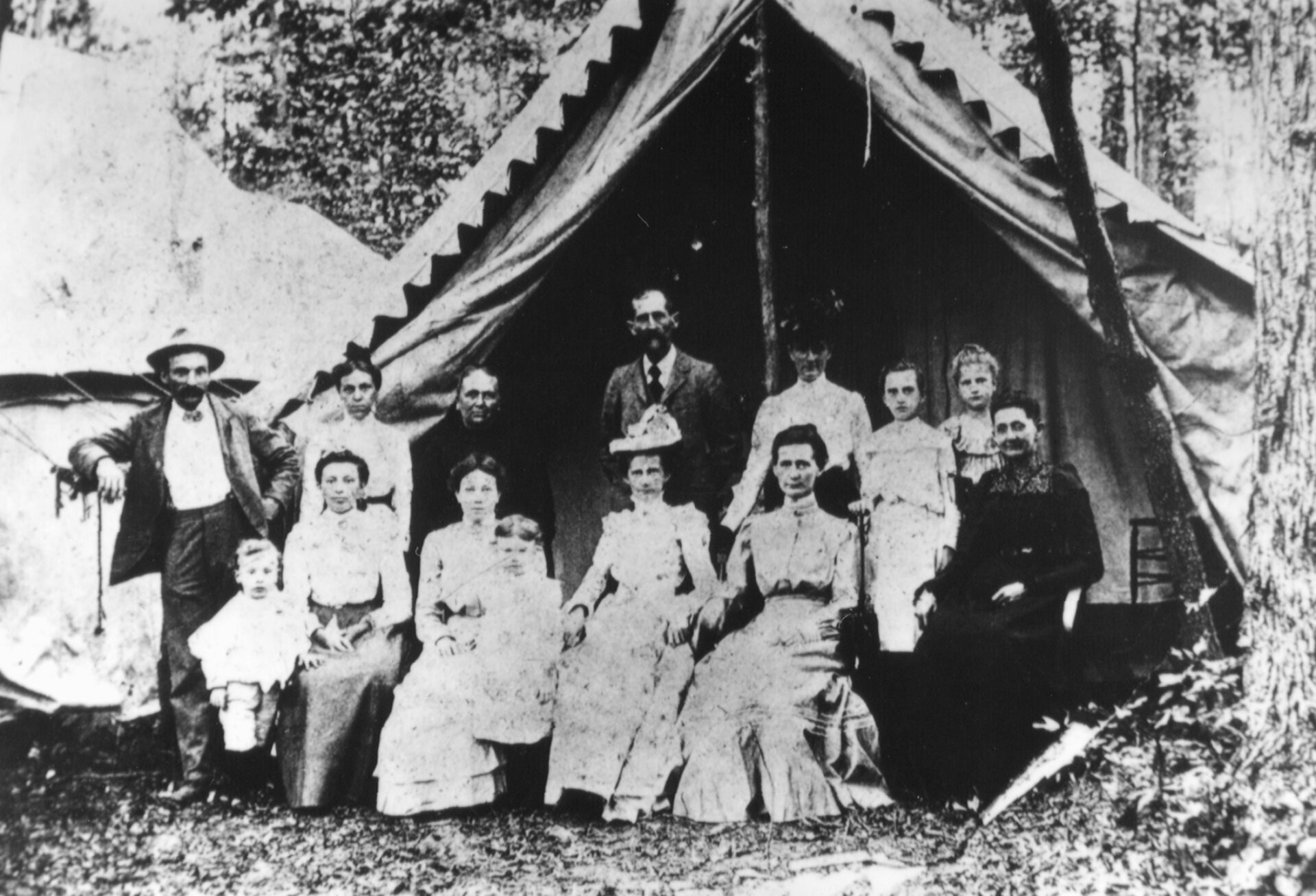Carroll Yesteryears
27 July 2008
Camps were Big During Summer
By Mary Ann Ashcraft
Remember the song entitled “Give Me That Old Time Religion?” It immediately comes to mind when reading accounts of camp meetings in newspapers of the late nineteenth century. Carroll County, the birthplace of Methodism in the U.S., was the site of numerous outdoor evangelical gatherings held by Methodists as well as United Brethren and Church of God members for a week or more in July or August.
These events, not unlike modern revivals, were already popular by the beginning of the nineteenth century. As early as 1810-1812, a gathering at Winchester, Virginia, was attended by roughly five thousand people. In 1872, the well-known Emory Grove Camp Meeting in nearby Glyndon, Baltimore County, boasted hundreds of family tents plus guests staying in a large hotel on the grounds. Families could combine a summer vacation near home with a healthy dose of religious experience. Preaching at one meeting was said to last up to sixteen hours a day!
Camp meetings cropped up all over Carroll County, usually close to railroad stops. Newspapers mention them near Mt. Airy, Linwood, Finksburg, Freedom/Eldersburg, Hampstead and elsewhere. Participants could transport their tents and other supplies by train or wagon for a long stay or come for a day’s outing. Special “commuter” trains often ran during the time of popular meetings. With a few exceptions, the size of local camp meetings seems to have been about 20-30 tents, but day visitors could have swelled the over-night crowd considerably.
In addition to proximity to a railroad, meeting sites were chosen for a supply of good water and a pleasant grove of shade trees where tents could be pitched and a platform erected for the “tabernacle” where preaching took place. Though the sites were used year after year, everything was apparently dismantled once the meeting closed, except at places like Emory Grove. Gatherings took place during the farmers’ brief respite between wheat harvest in early July and later crop harvests, canning and other summertime responsibilities.
The July 17, 1877, Democratic Advocate reported on the Freedom meeting, “The grounds are well chosen, the situation is high and pleasant, and easy of access…The booth and boarding tent has been awarded to Mr. Joshua T. Perine, he being the highest bidder.” This helps to answer the question of how people were fed over the course of many days at meetings where there were no permanent structures.
When Louis Shriver and three friends spent a day at Emory Grove in 1872, they “paid 50 cents each for [a] round-trip ticket from Westminster to camp. Attended three services while there and spent the balance of the day in looking around. There were about 300 tents and nearly all of them fixed up in good order and furnished with carpet, looking glasses, chairs, beds, tables and in fact, everything that is needed for comfort and ease. The tents were arranged in the streets and avenues and each have their respective name and are known by it. Most of the people board at a large hotel on the grounds and at which we got our dinner at 75 cents.”
Newspapers mentioned the names of preachers and usually included a statement such as, “The meetings were interesting, and the best of order was maintained.” It seemed curious that “order” was an issue at a gathering primarily religious in nature until my friend Ann Horvath found a reference to whiskey sellers who “hung around the edges of the camp. Barrels were hidden in the grove and [whiskey] sold by the cupful to willing participants.” Now “O Be Joyful…” took on an expanded meaning!
Mary Ann Ashcraft is a library volunteer for the Historical Society of Carroll County.
Photo credit: Baltimore County Public Library

This image file is owned by the Baltimore County Public Library Legacy Web project, Towson, Maryland USA. http://www.bcpl.info/legacyweb
Photo caption: In this c.1903 photograph, a family poses outside its tent at the well-known Emory Grove Methodist campground in Glyndon, just outside Reisterstown.





